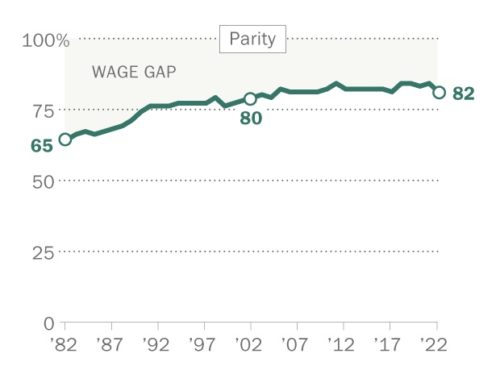“We conclude that the doctrine of ‘separate but equal’ has no place. Separate educational facilities are inherently unequal.”
—Chief Justice Earl Warren
Introduction
Over the past twenty-five years I have read on three occasions the two volume book, Simple Justice. This book focuses on Brown v. Board of Education, previous Supreme Court decisions dealing with race, and the importance of race in understanding American history. Simple Justice helped me understand the full implications of this case. In addition to outlawing segregation in Topeka Kansas, the court on the same day invalidated segregated facilities in Washington DC, South Carolina, Delaware, and Virginia. The court in essence ruled that no longer was de jure segregation permissible. Desegregation provided Afro-Americans simple justice after interminable delays.
One person can make a difference. In this instance, the role of Chief Justice Earl Warren was decisive in assuring a unanimous verdict outlawing segregation. That is, the school segregation cases originally were brought in 1952. At that time Chief Justice Fred Vinson formerly a congressman from Kentucky presided over a deeply divided court. Although the data is sketchy, a Vinson Court probably would have narrowly upheld segregation. Fred M. Vinson died suddenly, and unexpectedly from a heart attack early on the morning of September 8, 1953. Many historians believe that his death was fortuitous for the Supreme Court, as his successor Earl Warren was able to persuade the Court to unanimously agree to the landmark decision Brown v. Board of Education. Indeed, Felix Frankfurter was reputed to have said that it (Vinson’s death) might be considered proof of divine intervention.
The Brown decision had far reaching impact politically in many Southern states. Specifically, racist extremists such as Orval Faubus, Governor of Arkansas; Price Daniel Governor of Texas; and George Wallace of Alabama defeated white moderates. Georgia even elected a rudimentarily educated fried chicken restaurant owner to be governor solely on the basis of his defying the 1965 Civil Rights Act. From 1955-1964 the Federal Government needed to use troops to assure compliance with legal rulings in such disparate states as Arkansas, Alabama, and Mississippi. The Southern Manifesto was a document written in February-March 1956 by legislators in the United States Congress opposed to racial integration in public places. The manifesto was signed by 101 politicians (99 Democrats and 2 Republicans) from Alabama, Arkansas, Florida, Georgia, Louisiana, Mississippi, North Carolina, South Carolina, Tennessee, Texas, and Virginia.
The justices of the Supreme Court understood that ordering desegregation of the public schools was a politically lightening rod. President Eisenhower reputedly said after the Brown decision that his appointment of Earl Warren as Chief Justice was “his biggest damn fool mistake.” Eisenhower tepidly and belatedly supported integration. However, his federalizing troops to support court ordered integration of Central High School in Little Rock established the precedent that the Federal government would employ force to support integration.
In large part the decision to bundle the desegregation cases and provide the defendant’s name–Topeka Kansas– reflected a genuine desire not to stigmatize the Southern States. The justices took pains to assure the Nation that the segregating states had acted legally in conformance with previous policy. That is, the segregating states had complied not only with the Plessy decision but had obeyed subsequent decisions upholding segregation. For example, the Court had upheld segregated school systems from 1896-1954 on at least five separate occasions. Moreover, in a case dealing with implementation of Brown (sometimes called Brown II) the Court in 1955 used the phrase “all deliberate speed” in order to reduce partially the groundswell of opposition to enforced desegregation. The Court recognized that it must move carefully so as to mitigate Southern resistance. Also, the Court preferred that local magistrates work with school boards to implement desegregation; that is, the Supreme Court did not want to take the place of local school districts in implementing the myriad issues involving desegregation.
Major Decisions Involving Race
The relationship between the races has historically been a centerpiece of controversy in the United States. One of the essential compromises required to get nine states to approve the constitution was over the manner of counting Blacks. The issue was important in order to determine Congressional representation. Ultimately, three fifths of the slaves were counted for census purposes. Dred Scott v. Sanford (1857) was the first instance in which the Supreme Court invalidated a major piece of federal legislation. The decision declared that Congress had no power to prohibit slavery in the federal territories, thereby striking a severe blow at the legitimacy of the emerging Republican Party and intensifying the sectional conflict over slavery. Plessy v. Ferguson (1896) established the precedent of separate but equal. That is, a state could satisfy the due process requirements of the 14th Amendment by establishing segregated facilities as long as they were equal. The Court failed to investigate the quality of separate facilities until the 1930’s. Brown v. Board of Education (1954) ultimately held that conditions had changed so markedly since Plessy that “separate but equal” no longer satisfied the requirements of the states to insure equality to all of its citizens under the 14th Amendment. The Court ruled explicitly that State enforced segregation-de jure segregation– injured Blacks. Within a few years after Brown, the Court outlawed segregated municipal swimming pools, golf courses, public parks, etc.
In summary, our court system neither served better nor worse American society in regard to racism. Stated differently, the Courts support of segregation was echoed by other branches of government. William Brennan in 1985 made a telling observation on why ultimately the Supreme Court struck down segregation’s flagrant injustice “the genius of the Constitution rests not in any static meaning it might had had in the world that is dead and gone, but in the adaptability of its great principles to cope with current problems and current needs.”
Historical Background
Following the Civil War, Congress passed three Amendments and a Civil Rights Act to assure fair treatment of Afro-Americans. Nevertheless, Congress sent mixed messages about their real intent. That is, the same Congress that passed these Amendments established segregated school system in Washington DC. Congress within a decade withdrew federal troops from the Confederate States, letting southerners “punish” Afro-Americans for the Southern defeat in the Civil War.
For almost ninety years our court system flagrantly failed to uphold the Civil Right Amendments and civil right statutes. The courts twisted words and sentences out of context in order to render their racist decisions. Justices from all parts of the nation, including Northern veterans of the Civil War, abridged the civil rights of Afro-Americans. Initially the Court ruled that the 14th Amendment protected Afro-Americans from discrimination by a state, but not an individual. However, the Court never protected Afro-Americans when state officials abridged Black civil rights. The Court then ruled that a state met the test of the 14th Amendment when it provided “separate but equal facilities.” However, the Court did not investigate facilities to assure equality until the 1940’s. The Court ultimately ruled that Berea College, a Kentucky private institution, could not provide integrated education.
There was a paradox. Supreme Court Justices such as Holmes, Brandeis, Frankfurter, Hughes, and Jackson who demonstrated intellectual courage in the face of other miscarriages of justice acquiesced to the civil rights abuses. It would be instructive to learn if these men had private reservations about their pro segregationist decisions. Ironically, corporations successfully used the Fourteenth Amendment to fight restrictive legislation at the same time the Courts turned a blind eye to Black’s pleadings.
Until 1920, almost all leading authorities gave evidence of Black’s inferiority. So-called scholarly studies supported race subjugation on the basis that the brain of Blacks was smaller. The relatively high score on academic tests by Blacks in the North was dismissed. The reasoning was that northern Blacks were lighter skinned and more intelligent than their southern counterparts. Pundits glossed over the obvious fact that in the North Blacks had better educational opportunities.
Also racism was epidemic in America and not just relegated to the former Confederate states. The Ku Klux Klan elected a governor, Edward Jackson (1924) in Indiana. The Springfield, Illinois race riots in 1908 led to the formation of the NAACP. Segregated municipal pools operated throughout the country. America passed laws limiting immigration of Asians and Eastern Europeans. The United States armed services were segregated until 1947. Seventeen states plus Washington DC operated segregated school systems as late as 1954.
Cultural institutions and colleges in the North practiced discrimination.
Marion Anderson was the first Afro-American to perform at the New York Metropolitan Opera in 1955. Blacks were prohibited from participating on many college sports teams even in the North. Former President Gerald Ford an outstanding college football player threatened to quit rather than accept University of Michigan’s decision to not play his Black teammate against Georgia in a Bowl Game. Only at the urging of this Black teammate did Ford stay on the team.
Black Struggle against Segregation
Ultimately, the fight against segregation was led by Afro-Americans who not only funded the legal efforts of the NAACP but also served for the most part as counsel for Black plaintiffs. During the struggle to overturn racist legislation Blacks certainly worked with white academics and professors. There were notable instances of white academics making enormous efforts. However, almost of all of the leg work was done within the Black community.
The role of America’s academic community in providing the intellectual undercurrent of our attitude toward race changed over time. Sociological and scientific academic works supported “racist” stereotypes until the 1920’s. Sadly much of this mistaken hypothesis emanated from leading universities throughout the country. The damage of misguided education lasted for generations because it instilled misguided notions in America’s future leaders in subsequent generations.
Academic studies dramatically altered their findings in the 1920’s That is, after World War I, almost all academic medical and sociological studies argued that race was not a determinant of mental differences.
After World War II, segregationists had difficulty recruiting scholars even from segregated White Universities to support their efforts. That is, starting in the 1920’s leading academics in the sciences provided compelling evidence that Blacks’ intelligence was comparable to Whites. Moreover, in addition to the eminent Black sociologist Kenneth Clark who pioneered sociological studies showing that segregation caused lasting damage to Blacks, other sociologists provided similar studies. Another work that the Supreme Court cited was Gunner Myrdal’s An American Dilemma: The Negro Problem and Modern Democracy (1944). Academics’ findings were important in buttressing the arguments of the judges who ruled in Brown v. Board of Education. The Court upheld Kenneth Clark’s contentions that segregation harmed the psyche of Blacks. Therefore, the Court dismissed the argument of Plessy v. Ferguson that a state could assure “separate but equal facilities.” In the Plessy case, Chief Justice Brown declared “We consider the underlying fallacy of the plaintiff’s argument to consist in the assumption that the enforced separation of the two races stamps the colored race with a badge of inferiority. If this be so, it is not by reason of anything found in the act, but solely because the colored race chooses to put that construction upon it.” Justice Warren speaking for a unanimous Court in Brown v. Board of Education overruled the Plessy decision and its reasoning.
Segregated Rulings
From 1870’s until the 1940’s, the court system upheld segregation in almost every phase of American life. The courts turned a blind eye to states’ contravention of Blacks right to vote promised under the 15th Amendment. As late as 1944 the Democratic Party prohibited blacks from voting in the primaries in Southern states, effectively eliminating their legal representation. That is, winning the nomination of the Democratic Party was tantamount to winning the general election. The Courts until after World War II supported segregated intrastate transportation and restrictive housing covenants. In 1908, Kentucky v. Berea College, the Court ruled that a private college could not teach Whites and Blacks together in the same facility at the same time.
Wedges in Segregation
Starting in the 1930’s the Supreme Court belatedly began to insist on at least some form of equality in Black education. They demanded that separate facilities indeed be equal. Over time, the Court held that Black teachers must get the same compensation as Whites. The states must spend as much per capita on Blacks as on Whites. Also the court ruled that Blacks were entitled to the same quality graduate schools as Whites. This opened up law, pharmacy, engineering, and medical schools to Blacks. The Court invalidated capital punishment cases imposed by all White juries.
Guiding Philosophy for Desegregation
In order to legally overturn segregation, the litigants used a “two bow strategy.” One element was to require that the segregating states invest large sums of money to indeed fulfill the wording of “separate but equal.” Realistic appraisals showed that in field such as law where knowledge of judges and fellow lawyers was a cornerstone of successful practice separate law schools were inherently unequal. In other cases, it would be impossible for states to provide equal engineering or medical schools.
The second strategy was to prove that state ordered “separation stigmatized the Black race.” The second strategy was more controversial among both Whites and Blacks. Whites feared that commingled education inevitably led to social and sexual integration of the races.
On the other hand, some Blacks also had reservations. From a practical standpoint, they fretted that a Supreme Court decision supporting Plessy would undermine racial progress in other areas. Also, Blacks recognized that integrating schools could lead to widespread dismissal of Black school teachers, a pivot part of the emerging Black middle class. Ultimately, Black leaders such as Thurgood Marshall, James Nasbrit, and William White chose to argue that state imposed segregation violated the 14th Amendment Due Process Protection. Moreover, they felt a defeat in the Brown Case would not lead to losses in other civil rights cases.
Role of Justice Warren
The skillful political dexterity employed by Earl Warren in getting a unanimous decision is fascinating. Specifically, his appointment to the Court assured probably six votes for integration. Initially, three justices were probably for upholding Plessy: Tom Clark, Stanley Reed, and Robert Jackson. Warren placated Clark and Jackson by using moderate language and promising that the imposition of desegregation remedies would be deliberate. The most obstinate opponent to applying the 14th Amendment to school desegregation was Stanley Reed, a native of Kentucky. Warren and Frankfurter worked hard to persuade Reed that for the good of the country the decision should be unanimous; that is the court should vote with one voice. The unanimous decision took some of the “starch” out of the segregationist position. That is, Plessy supporters could not realistically count on getting a reversal.
Originally published in the Sarasota Herald-Tribune



